Easy Ways to Stay Cool and Save Money at Home
07/12/19
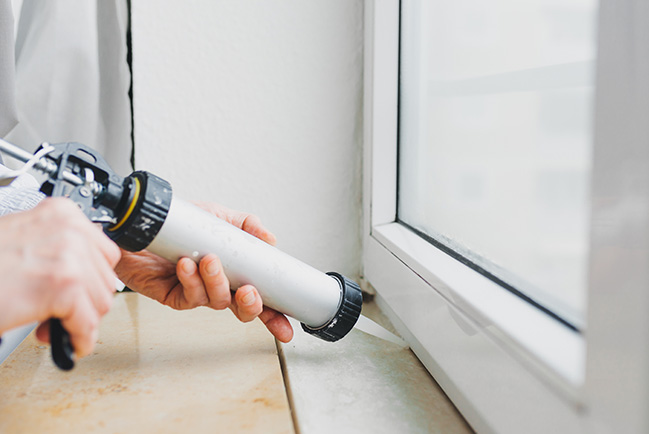
Summer is not synonymous with staying cool and saving money. Between rising temperatures and family vacations, it can’t hurt to learn small yet effective ways to keep your home cooler and your bank account fuller.
Nobody wants to be without air conditioning, especially in the hot and humid parts of the country. While there’s nothing like the arctic blast of a new, high-powered air conditioner, our ancestors were able to stay cool without AC and we can too.
Here are some tips for staying cool and comfortable without the use of air conditioning:
Invest in ceiling fans and use them year-round
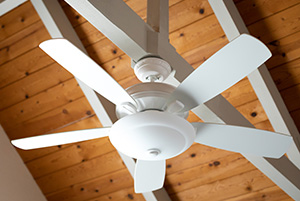
Before you storm the nearest appliance store in your neighborhood, take some time to really think about the type and style of ceiling fan that would suit your needs best. You don’t want a weak, wobbly fan, but you don’t need industrial fans either. Speak with a licensed professional about your ceiling fan options and where the best place would be to install it. There are also many ceiling light/fan combos that can solve two problems for the price of one.
With the help of a professionally installed ceiling fan, you can keep your home about 5 degrees cooler for pennies an hour. That’s right, in rooms with ceiling fans, people feel about 4 to 5 degrees cooler than in rooms without fans. So instead of spending dollars every hour with an air conditioner, turn on the fan and raise the thermostat for instant savings. Just remember to turn off the fans before you leave a room since they don’t actually lower the temperature of the room, they just make you feel cooler.
Seal and insulate your home
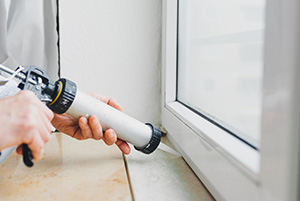
The average home has enough small air leaks to add up to a fully opened window. No wonder our heating and cooling systems seem to be running nonstop. All that conditioned air is escaping out of leaks and cracks in your building’s shell. In order to retain heat or cold inside of your home, it’s important to make sure you have sealed and insulated your home properly.
The first thing you want to look for are the floor joists in the attic. If you can’t see floor joists, that’s a good thing. It means you may already have enough insulation. If, on the other hand, you can see your floor joists, you probably need more insulation. Your attic insulation should be at least 12” high. Add insulation in other unconditioned areas, such as the floor joists in the basement.
In addition to adding insulation, check your doors and windows for air leaks and replace the caulking and weatherstripping as necessary.
Other common air leaks include:
- Recessed lights
- Attic hatch
- Crawl space
- Dryer vent
- Outdoor faucet
- Bathroom and kitchen vents
- Electrical outlets
Whether you do it yourself or not, it’s a good idea to consult with a professional HVAC technician before starting any extensive home sealing and insulation projects. Not only can a professional give you advice and guidance, they’ll make sure you have enough ventilation for proper indoor air quality. Airtight homes are energy efficient all right, but they need a mechanical ventilation system to maintain healthy conditions. Contact the experts at HELP to learn more about our HVAC, indoor air quality and insulation services.
Weatherstrip to seal air leaks
Weatherizing doors, windows, attic hatches, and other movable components around your home can lower your energy bills by up to 15%. Unfortunately, most weatherstripping has a lifespan of 1–5 years. But before you add or replace the weatherstripping around doors and windows, learn how to detect air leaks.
There are a variety of weatherstripping types to choose from, each with their own advantages and disadvantages. You may need more than one type of weatherstripping to accomplish the job.
Here are some of the most common types of weatherstripping and where they are typically used:
Tension seal (self-stick vinyl) – Tops and sides of doors, and inside track of sliding or double-hung windows.
Felt (sometimes reinforced with metal strip) – Around doors and windows.
Reinforced foam (closed-cell foam on wood or metal strips) – Window and doorstops, window sashes, and bottom of doors.
Tape (closed or open-cell foam, or EDPM rubber) – Window sashes, attic hatches, inoperable windows, and doorframes.
Rolled or reinforced vinyl (pliable or rigid strip gasket) – Window and doorstops, window sashes, and bottom of door (rigid only).
Door sweep (plastic, vinyl, sponge, or felt reinforced with aluminum or steel) – Interior side of in-swinging doors or exterior side of out-swinging doors.
Magnetic (like refrigerator gaskets) – Tops and sides of doors, double-hung and sliding windows.
Tubular rubber and vinyl – Around doors.
Reinforced silicone (tubular gasket with metal strip) – Doorjambs and window stops.
Door show (vinyl insert with aluminum face attachment) – Space beneath a door.
Bulb threshold (vinyl or aluminum) – Outside door thresholds.
Fin seal (pile/fuzzy weatherstripping with plastic Mylar fin) – Aluminum sliding windows and glass sliding doors.
Source: energy.gov
Here are some tips to keep in mind when adding weatherstripping:
- We recommend testing different weatherstripping options before committing to buying them for all your doors and windows.
- Make sure that your weatherstripping provides a tight seal without making it difficult to close or lock.
- Apply weatherstripping to clean, dry, and even surfaces.
- Weatherstrip each side with one continuous piece of weatherstripping, making sure they meet tightly at the corners.
- Measure twice before cutting weatherstripping to size.
- On the outside, if you notice any obvious leaks around your window trim, seal it up with some window and door caulk. You can also use caulk to seal around the interior window frame.
- Call a professional if you notice swollen or cracked frames, severe leaks, constant fogging, or obvious damage.
Weatherstripping comes in a variety of sizes, shapes, and materials. Speak with the professionals at HELP if you have any questions about sealing your windows and increasing energy efficiency.
Be strategic with your window coverings
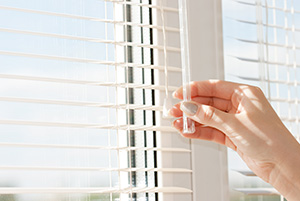
According to the Department of Energy, “75% of residential window coverings remain in the same position every day.” Whether shades, blinds, or curtains, it’s best to be strategic. In the summer, keep windows that get direct sunlight covered to reduce heat gain. If you need light, only expose the windows that don’t get direct sunlight.
Types of energy-efficient interior window treatments include:
- insulated cellular shades
- window quilts
- roller or roman shades
- blinds
- curtains and drapes
- window films
Don’t forget that you can cover your windows from the exterior as well. Reduce solar heat gain with exterior shutters and shades. An awning for example can “reduce solar heat gain in the summer by up to 65% on south-facing windows and 77% on west-facing windows” (EPA).
Consider installing window screens or solar screens to block heat and keep insects out (if your windows are open). Window films are another option for reflecting solar energy and reducing glare. Look for window film with a lower solar heat gain coefficient (SHGC) for better solar blockage.
Types of energy-efficient exterior window treatments include:
- awnings
- shutters and shades
- solar window screens
Change your air filter
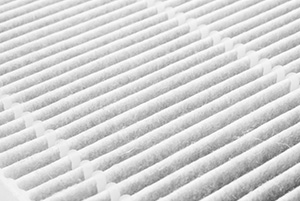
During the summer months, you are putting your AC to work. That means that your air filter is getting a harder workout as well. The more you use your AC, the more frequently you need to change your air filter. It collects dust and airborne contaminants at a fast rate, and in order to keep your AC working at peak performance, take a few minutes every 30 days to check on your filter and pop in a new one. Usually you need to change your filter every 1-3 months, but during heavy-use months, it’s best to clean or replace it every 30 days.
A dirty air filter can affect your comfort. When an air filter is dirty, it gets clogged and is no longer effective at trapping airborne contaminants. Dirt and airflow problems can arise that will inevitably impair your AC from keeping you as cool as you could be. And when the AC has to work harder to keep you cool, that will cost you on your next utility bill.
A dirty air filter can lead to:
- Loss of efficiency
- Poor indoor air quality
- Warm and cold spots
- Reduced airflow
- Dirty coils and fan
- System breakdown
Grow plants!

We learned from school that plants feed on carbon dioxide. But did you know that they are also natural coolants and a great way to shade your building from solar heat gain?
Growing leafy trees around your home is a green way to intercept solar heat and promotes energy conservation. Also, if shrubs or trees surround your AC, you may even increase its efficiency by up to 10% according to the U.S. Department of Energy. Just be careful not to plant anything too close to your outdoor HVAC unit. For maximum airflow and efficiency, maintain a minimum 2-foot clearance around the entire outdoor unit and periodically check it for cleanliness. Learn more about cleaning and maintaining your condenser coils.
Cook outside

Going outside and cooking on the BBQ is a summer staple. Would you do it more often if you knew that it could also save you money on your energy bill and keep your home cooler and more comfortable?
You don’t want to cook hot meals inside and raise the heat. Instead, grill outdoors and keep the heat out of your house. Use the indoor kitchen to make salads and other items that don’t include the oven or stove. You can even use the microwave instead of the oven or stove during the day to reduce the amount of heat production in the home. Or, wait until the morning or late at night when it is cooler out to make hot meals indoors.
Use these energy-saving tips as an excuse to bring the family outdoors for more summer fun and yummy grilled meals.
Summer cooking tips to keep your kitchen cool:
- Make meals that don’t require the oven or stove.
- If you must, use smaller pots.
- Use the microwave during the day.
- Use a slow cooker.
- Cook less regularly, but make more quantity.
- Head outside and use the grill.
Electricity use peaks in the summer due to the constant operation of our air conditioning systems. Fortunately, there are many ways to cut the costs and your carbon footprint.
If you have questions about staying cool and comfortable this summer, don’t hesitate to contact HELP Plumbing, Heating, Cooling and Drains. Schedule your air conditioning maintenance visit today!
Posted in: Air Conditioning, Cooling, Energy Efficiency
Learn More!
Offer Expires Soon




